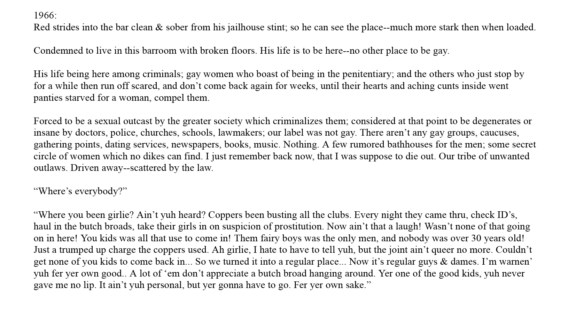There are very, very few records of transgender people of color in Berkeley in the 1970s. Almost, in fact, that we could find in several months of searching, much to our regret. There are a few hints–such as a handful of sex ads from trans women who promote themselves as “Asian” or “Latina,” and the records of the law suit won by Toni Ann Diaz, who was likely a person of color. Both this disparity and what records we do have suggest that the transgender population in Berkeley was disproportionately white and, if not middle class, less low-income, compared to the San Francisco population. Trans people of color seem to have gravitated toward the gay bar scene in SF, along with the district of the Tenderloin, a historically low-income area known for its high queer and trans population.
Red Jordan Arobateau was one such figure, a low-income mixed race trans man and author living mostly in San FranciscoIn this autobiographical excerpt, which takes place the same year as the Compton Cafeteria Riots, Red Jordan Arobateau describes getting out of jail only to find that one of his only safe havens as an LGBTQ person had been taken away as a result of police harassment. Such harassment was incredibly common, as was, unfortunately, the criminalization and isolation of SF’s LGBTQ community before Compton, Stonewall, and the start of the gay and trans rights movements.
To see more of Red Jordan Arobateau’s work and website, go here.
